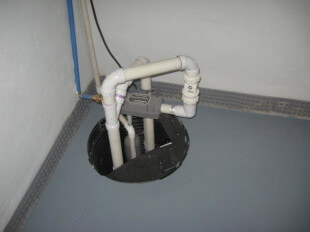The sump pump pit, also known as the sump basin, is an essential component in many homes, especially those with basements prone to flooding. This underground space acts as a collector of unwanted liquids, such as rainwater or groundwater, helping to keep basements dry and safe. Join us on a journey to discover what lies within the sump pump pit, how it operates, and how to maintain it in optimal condition.
Details of the Sump Pump Pit
The sump pump pit is a shallow excavation, typically located in the basement, designed to collect unwanted water. It is commonly lined with a durable material like plastic or concrete to prevent water damage to the surrounding area. Within the pit, a sump pump is installed to remove accumulated water and prevent flooding.
Operation of the Sump Pump Pit
Water enters the sump pump pit through various means, including groundwater seepage, infiltration from the soil, or directed drainage systems such as French drains. Once the water level in the pit reaches a certain threshold, the sump pump is activated automatically or manually to pump the water out of the pit and away from the foundation of the house. This process helps to prevent water damage and mold growth in the basement.
Maintenance of the Sump Pump Pit
Regular maintenance of the sump pump pit is crucial to ensure its proper functioning and prevent potential problems. Here are some maintenance tasks to consider:
-
Inspect the pit and pump: Regularly check the sump pump pit for any signs of damage, debris accumulation, or pump malfunctions. Clean the pit and remove any debris that may obstruct the pump’s operation.
-
Test the pump: Test the sump pump periodically to ensure it activates properly and pumps water out of the pit effectively. Consider installing a backup sump pump or battery backup system for added protection during power outages.
-
Check discharge pipes: Inspect the discharge pipes connected to the sump pump to ensure they are clear of obstructions and properly directed away from the house. Redirect any discharge away from sanitary sewers to comply with local regulations.
-
Monitor for unusual sounds or odors: Be alert to any unusual sounds, vibrations, or odors coming from the sump pump pit, as these may indicate potential issues that require attention.
The sump pump pit plays a crucial role in protecting homes from water damage and basement flooding. By understanding its operation and performing regular maintenance, homeowners can ensure their sump pump pit remains effective and reliable, providing peace of mind even during heavy rainstorms or groundwater surges.
Other pipes that may be coming out of or going into your sump pit.

- HVAC: Furnace condensation is sometimes brought to the sump pit by a 3/4″ PVC coming directly from the HVAC unit. This is different than the 3/8” plastic tube from a condensate pump.
- Radon: Radon is a gas that enters your building from the soil beneath and around your house that is connected to the sump pump in your basement. Using a 4” PVC pipe, a radon system collects radon from the soil below a house via the sump and pumps it out.
- Dehumidifier Drip: Many dehumidifiers come with a hose fitting that allows you to hook a drip hose directly from the dehumidifier bucket directly into the sump pit so there is no need to empty it.
- Backup pump discharge: Whether you use a 7 Day Battery Backup sump pump or a water-powered emergency sump pump, the water needs to be removed from the house. Like the regular sump pump, the backup pump should have an 11/2” PVC discharge pipe.
- Washing machine overflow: A washer tray under the washing machine on the upper floor can be delivered to the sump pit. If the washing machine leaks, the water will be safely drained away. Washer trays are available at home centers.
Discharging anything into the sump pit could present problems.
Any liquid you introduce into the sump adds moisture to the below slab area.
Requires more electricity to cycle on and off.
The sump pump discharge should only have clean water with nothing added since it ultimately goes into the stormwater drains or back into the earth.
If you have any questions, have a basement waterproofing specialist look at your sump pit. Should I get my Sump Pump Inspected?
A-1 Basement Solutions provides free basement health inspections to New Jersey homeowners. Contact A-1 Basement Solutions at 908-322-1313, or info@A-1Basements.com for a free in-home inspection and detailed quote.
Learn More About Protecting Your Home Today Contact Us
